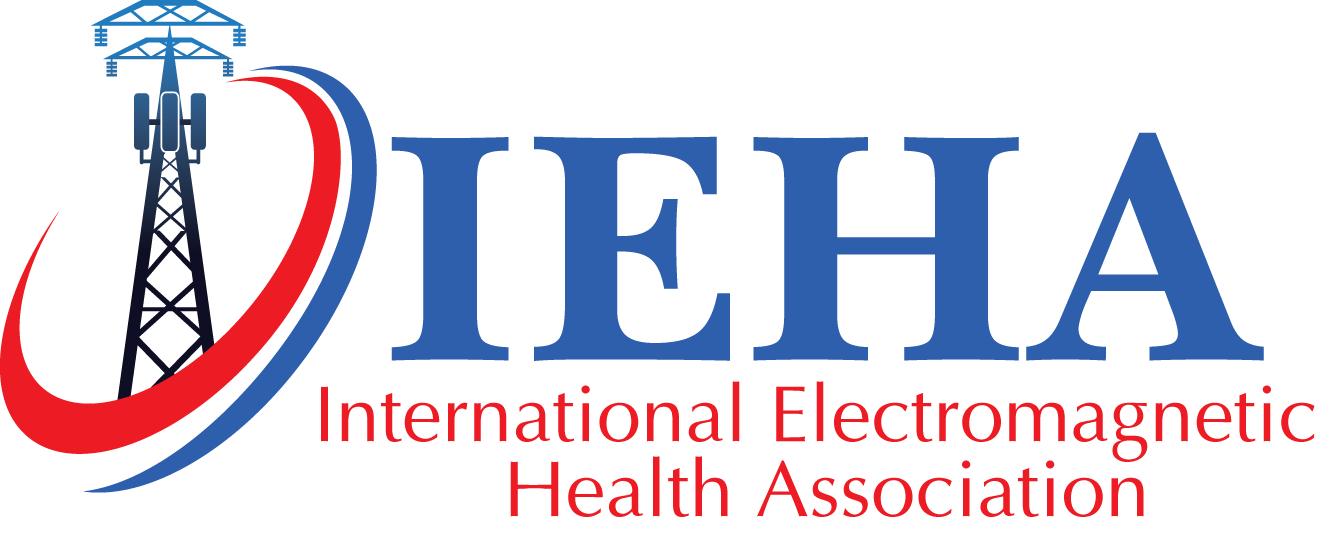
Welcome to EMFAction.org - The interactive visitor and member center for the International Electromagnetic Health Association (IEHA).
Members: To access the members-only sections of this website such as the EMF Action Center, members-only discussion forums, and member resources, please login with the email address you used when you signed up, or via your social media account.
If you are not a member, we wholeheartedly welcome you to join now! The International Electromagnetic Health Association is the only membership-based, member-driven, full-time advocacy group which represents EMF or electrosensitive women and men, parents, scientists & researchers, and all who know that safer technologies and habits must be advanced.
Public Forum 54

Effects of RF signals on medical implants

Gary Olhoeft, PhD, geophysicist and electrical engineer
Excerpted from An Electronic Silent Spring
I have Parkinson’s Disease. In 2009, I had a Deep Brain Stimulator (DBS) implanted in my brain. It completely replaces the pharmaceuticals I took for fifteen years, which caused increasingly unpleasant side effects. My Medtronics manual says that a cell phone must be at least 20 inches away from me with a SAR of no more than 1.8. Held near my head, the phone’s SAR can’t be more than 0.25 for 15 minutes. Otherwise, according to Medtronics, it will cause dangerous heating of my implant. If the implant gets too hot, it will malfunction, my brain could be injured, or I could die.
The Medtronic manual for my deep brain stimulator (implanted to ease effects of Parkinson’s) lists more than sixteen pages of potential electro-magnetic interferences. I have experienced interference with the operation and programming of my medical implant in elevators, on large commercial aircraft, at malls, libraries, government buildings and other places with security systems. Because interferences are almost everywhere, I built a monitor to carry around and warn me of potential hazards to avoid, including security and inventory control systems, Wi-Fi, “smart” meters, cell and radio/TV towers, wireless phones and wireless devices, buildings with faulty wiring, light dimmers, certain appliances, and many more.
If I walk through a security system–like the ones commonly found in retail stores, airports, government buildings or in the library at the university where I teach – my DBS sometimes shuts off. I have four seconds to reset it or I shake so badly that I am unable to reset it without help.
The National Institute of Health estimates that twenty-five million Americans now have implanted medical devices. Besides brain stimulators, the functioning of cardiac pacemakers, insulin pumps, cochlear implants and bone stimulators can also be disturbed by RF signals. A disabled person’s getting x-rayed while sitting in a metal wheelchair can be especially dangerous.
A friend with an insulin pump has to shut it off when he flies, because his pump interferes with the plane’s avionics, and they interfere with his pump. This limits how far he can travel. A former student told me that if she’s around several people using cell phones, her insulin pump malfunctions.
After another friend with a brain stimulator and a pacemaker had a cochlear implant installed, the signals from his implants interfered with each other. Each device functioned inappropriately, and he experienced tremendous discomfort. The surgeons who installed the devices suggested that his home’s electrical system was the source of his trouble. They did not believe that implants could interfere with each other. They can. Unfortunately, medical implants are not regulated for such interference; and my friend – who is an MD – had to prove to his physicians that they were causing him trouble.
Recently, at a meeting of people with brain stimulators for Parkinson’s, I asked if any of their implants shut off when they walk through security doors at malls and other places. Fifty people were in the room. Everyone raised a hand.
But no agency studies the effects of radiofrequency signals on medical implants. Even doctors who implant devices are likely unaware of the problems – though implant manufacturers typically alert patients to pages of dangers in their manuals.
Despite the fact that ten percent of Americans (more than twenty-five million people) have a medical implant, no agency studies their experience around wireless devices. Many of these people may find their implant malfunctioning (including shutting off) if they board an airplane, share an elevator with a mobile phone user, or step through a security door at a library or a mall. No agency studies the interference that may occur between devices when a cochlear implant is installed in a person who already has a deep brain stimulator and a pacemaker.
We need to broaden public awareness about the vulnerability of people with medical implants. We also need regulation that will limit electromagnetic emissions. We need to create limits around “second-hand” exposure to electromagnetic radiation since, for example, being in a metal-walled elevator with a person who is using a mobile phone can be especially hazardous for people with implants. At a minimum, stores and other places with security and Wi-Fi devices (now often not visible but hidden behind walls) should post warnings that a potential hazard exists for people with implanted medical devices and Radiofrequency Sickness.

Video: How to opt out from ‘smart’ meters (before & after measurements)
This must-see short film by Andrew Lankes of Austin, Texas, is loaded with truth and solutions for ‘smart’ meters, wireless, and dirty electricity.
What we like best about this 12-minute video are the clear measurements — with a ‘smart’ meter, and after it was replaced with a safe analog. Watch it here:

DIRTY ELECTRICITY MEASUREMENTS:
- Kitchen – with ‘smart’ meter: 232 V/sec
- Kitchen – with analog meter: 50 V/sec
- Bedroom – with ‘smart’ meter: 153 V/sec
- Bedroom – with analog meter: 60 V/sec
WIRELESS RADIATION MEASUREMENTS:
- Smart meter: over 2,000 uW/m2* (device maxed out)
- Analog meter: 0.4 uW/m2
- * – pulses much higher than 2,000 uW/m2
- Router with wireless: over 2,000 uW/m2 (device maxed out)
- Router without wireless: 0.6 uW/m2
- DECT cordless phone base: over 2,000 uW/m2 (device maxed out)
- Mobile phone: over 2,000 uW/m2 (device maxed out)
SOLUTIONS:
- 1) Replace ‘smart’ meter with analog meter
- 2) Hardwire computers with ethernet cable
- 3) Put cell phone in airplane mode when not in use, and don’t use right next to head. (Good idea: airtube headset)
- 4) Use a corded landline
We’re bio-electric beings, affected by electromagnetics

Easy Ways To Reduce Kids’ Exposure To Cell Phone Radiation

You never leave home without it. You might even be holding it right now: your cell phone.
But could this essential device be harming your health?
A new study from the federal National Toxicology Program reveals troubling evidence that cell phone radiation could cause brain cancer. Scientists exposed rats to radio-frequency radiation at levels similar to and higher than those emitted by cell phones. Compared to unexposed rats, the exposed male animals showed a greater likelihood of developing malignant glioma, a type of brain cancer, as well as tumors on the heart.
Although the 10-year, $25 million study tested radiation effects on rats, it offers valuable insight into the potential risk to people, a concern that both health experts and cell phone users have raised for years.
EWG issued reports in 2009 and 2013 describing the possible health risks of cell phone and wireless radiation, including an increased risk of two types of brain cancer. In 2011 the World Health Organization’s classified cell phone radiation as a possible carcinogen.
More than five countries have warned people to cut back on cell phone radiation exposure, particularly for kids, whose brains may absorb double the amount of radiation as adults. While research continues, here are some of EWG’s top tips for reducing your family’s exposure to cell phone radiation:
- Choose a landline for everyday calls.
- Don’t offer the phone as a toy while on the go or running errands.
- If your kids use your phone to play games, switch on airplane mode.
- Use a headset or speaker while talking on the phone, rather than holding it directly to your ear.
- While on a call, keep the phone away from your body – say, on a table in front of you, instead of your pocket.
- Store your phone away from your body, not under your pillow or clipped on your belt.
Choose a good case: Some cell phone cases may minimize radiation exposure, while others force the phone to work harder and emit more radiation. Click here to learn more about how to choose the best cell phone case.

Smart meters ‘not needed’ after all for European power grid
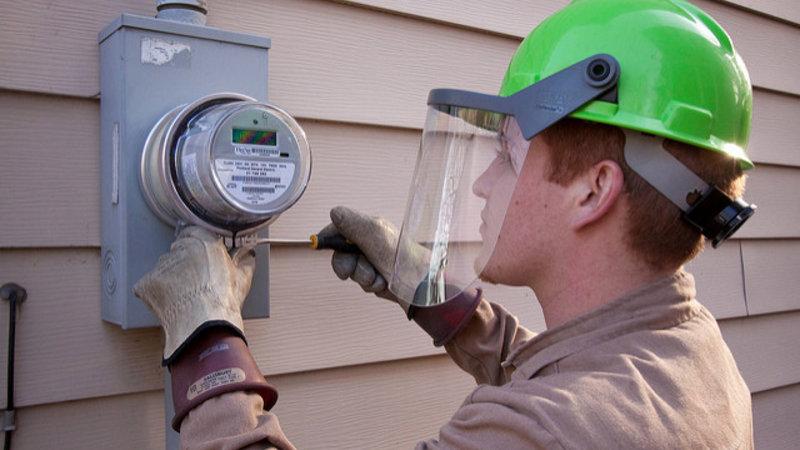
A transition to an intelligent electricity grid in Europe can take place without smart meters, industry players have said, in comments that will embarrass the European Commission, which pushed a Europe-wide plan to roll out smart meters years ago.
There are other more efficient ways than smart meters to help develop intelligent power grids, said industry delegates at the annual convention of Europe’s electricity association Eurelectric, held in Vilnius last week.
These include quicker integration of renewables, the development of energy storage and energy demand response solutions, said the industry representatives.
The actual benefits of smart meters were also questioned at the conference, as several member states have done previously. Germany, for instance, has decided not to have a national roll-out plan at all, running counter to requirements laid out in EU legislation.
80% roll-out target
EU member states are required to implement smart meters under the 2009 Third Energy Package wherever it is cost-effective to do so, with the goal to replace 80% of electricity meters with smart meters by 2020.
The 80% target applies to both households and commercial buildings, a Commission spokesperson confirmed. The EU executive will publish in the next one to two years a report on smart meters “in the context of our regular monitoring exercise of the progress of members states,” the spokesperson said.
But progress has been sluggish, with few countries having completed their roll-outs and a number of nations – most notably Germany – having so far decided against a nation-wide deployment of smart meters.
And the countries that do have a commitment to smart meters, such as the UK, have run into hurdles in completing its roll-out because some meters would cease to work if a consumer decided to change energy supplier.
Markus Merkel, a senior advisor to the management board of German distribution system operator (DSO) EWE, told the Eurelectric conference that “there isn’t a positive business case” for smart meters in Germany.
Real data vital
EWE’s move towards an intelligent grid has focused to a large extent on upgrading the system to integrate the vast amount of new renewable energy at a quicker pace.
He said smart meters would be more useful for DSOs in their work to upgrade the grid if they provided real time data on energy consumption rather than the circa 15-minute intervals that current products provide.
“We need something different, and maybe smart metering 2.0 – the next generation of smart meters – will deliver something more that we as DSOs can also use,” he said.
Laurence Carpanini, director smarter energy solutions at IBM, echoed the real time data point, adding: “I don’t look at smart meters now as being the drivers of change – you don’t need smart meters really.”
Instead, industry players should “think about flexibility solutions as a whole” and focus on a mix of demand response technologies, frequency response and energy storage, she said.
Storage was also highlighted by Ari Koponen, CEO of Finnish DSO and utility Caruna. He said that while smart meters have been “essential” for collecting energy consumption data, the aspiration should be to access this data in real time and bring in more storage solutions.
“This would [bring] the smartness of the grid to a whole different level,” Koponen said.
The industry’s comments are an embarrassment for the European Commission’s own plan to deploy smart meters across Europe by 2020.
The Commission spokesperson declined to comment on the views about whether or not smart meters are necessary for the transition to an intelligent grid.
Member states are expected to conduct their own cost-benefit analyses for their national smart meters roll-out plans, the official said.

Guide to North American Smart Meter Policies

Analog meter choice bills are being considered by a number of US state legislatures this year, in response to a drumbeat of public complaints. These states include: Missouri, Michigan, Maryland, Massachusetts, Ohio, New York, Pennsylvania, and Texas.

Money Talks: From ‘smart’ meters to power politics
The greenwash bait-and-switch: how deep does it go?
The 3-part presentation below, filmed in British Columbia in April 2016, will help us all see what’s really going on at a deeper level. I will uncover:
- how the biggest shareholders in the most destructive (but profitable) companies are the very governments that set the rules so those companies don’t pay taxes, destroy whatever they can for money and violate our core human values,
- how these entities are actually twisting our intentions of saving our planet into serving their own economic agendas, and to further their control / diminish our rights, and
- how so-called ‘smart’ meters are a key tool for all of this — and why they’re still being deployed despite a ridiculous level of obvious problems.
Part 1: ‘Smart’ meter fires
Our starting point on this journey is the widespread problem of ‘smart’ meter fires – an important precursor for what follows. You will see forensically why they cause fires and explosions (thousands to date), then financially why the collateral damage they cause is considered to be “worth the risk.” Hint: ‘smart’ meters are a keystone in the Big Data pyramid…

Part 2: Big Data, Big Power, Big Government
The insane drive of Big Data is being propelled by the energy industry. Within the popular paradigm, all eyes are on Big Oil as the “bad guys” in an environmental context. Certainly they are not doing the planet any good. But by keeping us within this narrow focus without deeper thought, they have a nice distraction for the world’s largest energy companies to move in on their data/carbon/currency endgame.

Part 3: Pensions, Power, Politics and Climate
This is where the pieces will connect, and it will all simply make sense. The the biggest root of all evil is not money itself, but how the people behind these agendas are after our money (and support of their agendas) for their insane ends.

So the next time you hear a politician talk about “climate”, you will have the keys to see how this all connects. And you will realize on this issue, like virtually everything else, they are probably lying.

Cellphone Radiation Linked to Cancer in Major Rat Study

Results of the largest, most expensive animal study on the link between cellphones and cancer are in. And the link is positive—weak, but positive.

Investigative documentary that explores the long-term health effects of cell phone radiation
MOBILIZE
FILM SYNOPSIS

Activist is Sued for Requesting Public Smart Meter Records
 The sysadmin-activist at the center of a bizarre legal battle over a smart meter network in Seattle, Washington, says he never expected a simple records request to turn into a lawsuit.
The sysadmin-activist at the center of a bizarre legal battle over a smart meter network in Seattle, Washington, says he never expected a simple records request to turn into a lawsuit.

Federal Study Finds Radiofrequency Radiation Boosts Cancer Rates in Animals
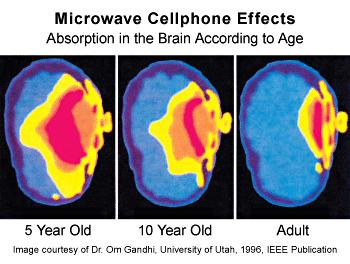
According to Microwave News, results of the U.S. National Toxicology Program (NTP) have shown that exposure to radiofrequency (RF) radiation has resulted in statistically significant increases in cancer among rats. These rats were subjected to whole body exposure from RF signals as used for GSM and CDMA-type cell phones over a period of two years [1].
“Discussions are currently underway among federal agencies on how to inform the public about the new findings. NTP senior managers believe that these results should be released as soon as possible because just about everyone is exposed to wireless radiation all the time and therefore everyone is potentially at risk.”
All topics 65

Wi-Fi allergy known as EHS has forced me to close my computer repair shop
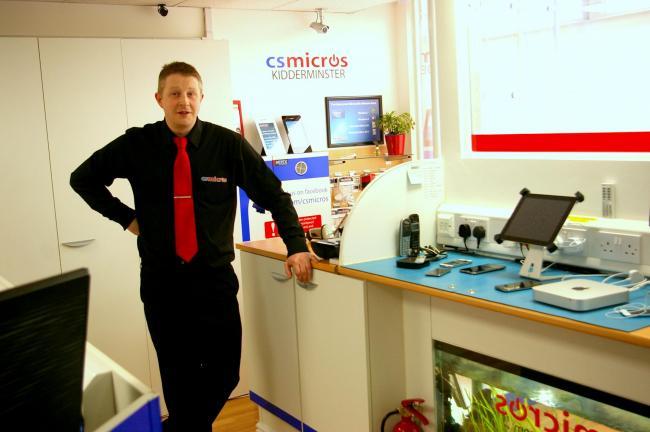
A KIDDERMINSTER man who fixes computers and phones for a living says he has been forced to close his repair business of 20 years as technology has made him ill.

Is it safe to carry cellphone in your bra or shirt pocket?
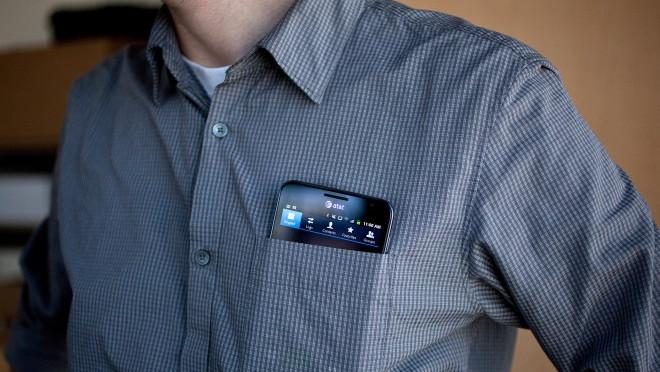
We had both stepped out for some fresh air after finishing our daily morning examination. After ending my phone call I returned the cell phone into my shirt pocket. My new friend, Mr Watergate, quickly asked: “Daktari, why do you put your phone near your heart? I heard it can cause heart attack,” this coming from an intelligence officer was no surprise to me. So I ask, is there any link between a mobile phone and heart troubles? Or more broadly, Is your cellphone harming your health? Is it safe to carry a cellphone in a handy shirt pocket all the time over your heart? Can the constant or burst of energy (one watt?) when a call comes in possibly affect the heart rhythm? What if your heart is a wee bit unhealthy in the first place? We recommend that those with implanted devices such as pacemakers or defibrillators keep their cellphones and media players at least six inches from the generator.
This can be readily achieved by carrying cellphones in the pants pockets or on a belt or purse holster. Where is the worst place to keep your cell phone? Some unconfirmed reports claim that cancer may develop in locations close to where a cell phone is kept, such as breast cancer in women. Why? The location of these tumors found, exactly aligns with the position of the cell phone being worn by these young women in their bras. There is a story told of a 21-year-old woman who upon receiving her first cell phone at the age of 13, put the device in her bra and wore it there daily until she received her breast cancer diagnosis. The WHO has reviewed and compiled a substantial quantity of scientific research on the topic and announced in May 2011 that radiation from cell phones is possibly cancer causing (carcinogenic) to humans For men, it has been said that, as cell phone minutes increase, sperm count decreases. According to Journal of the American Society for Reproductive Medicine, men who chat on their phone for more than four hours a day had a lower average sperm count and fewer viable sperm. Ultimately, common sense is needed in ensuring you use your cell phone in a manner that does not harm you. You should only use your cell phone when absolutely necessary, use a landline when you can. Always distance yourself from your phone - even a few centimetres between your body and your phone can diminish risks. Use hands-free devices as these emit much less radiation compared to a regular cell phone held to your ear.

WiFi in the Sky, Convenient, Profitable and In-demand – But Is It Safe?

This Statement of Concern from flight surgeons, pilots, accident investigators and medical, scientific and technical experts was edited by Kerry Crofton, "I worked for many years with pilots and air traffic controllers in Canada and the US and served on the Canadian Civil Aviation Tribunal. The following experts are calling for a review and monitoring of WiFi in commercial aircraft; there is scientific evidence of harm at ‘low’ government-sanctioned, non-thermal levels.”
Captain N. Anderson, FAA Fast Team Representative, Aviation Human Factors Researcher
Captain Anderson is a licensed Airline Transport Pilot who has worked with the US Federal Aviation Administration Wings Program, and as a human factors seminar leader on Pilot Proficiency and Cockpit Management.
“RF frequency assaults (from WiFi-enabled aircraft and the in-flight use of wirelessly connect mobile devices) are a key issue and need to be considered in any accident/incident investigation.
Symptoms that can be traced to RF exposure, as well as time spent viewing electronic screens that can affect cognitive abilities can contribute to accidents or incidents deemed pilot error.
It is necessary for studies to be implemented by the FAA or NTSB as well as independent interests that can confirm or deny the potential effect from the widespread use of airborne electronics. I have been involved with educating the aviation community about conditions that can affect brain chemistry and cognitive breakdown.
I have been voicing concern about RF frequencies affecting pilot's abilities to make executive decisions and now am concerned about the impact frequencies emitted from wirelessly-connected electronic screens have on the biology of the brain.
Since most companies are transitioning to electronic flight bags instead of paper charts, and since most modern aircraft have all glass cockpit presentations, the pilots are being subjected to non-stop screen interference with their cognitive performance.
My communication with FAA personnel has resulted in a response from Kyle Copeland, Ph.D., Research Health Physicist, Radiobiology PI FAA, CAMI, AAM-630, Numerical Sciences Research Team who says ‘I can say with certainty there is no ongoing research here at CAMI that deals with biological effects of nonionizing radiation (that is WiFi and the radiation emitted by wirelessly-connected mobile devices).’ ”
Note: Radiation exposure safety standards are based only on ionizing (thermal) levels – strong enough to warm human tissue; however, all of the adverse effects detailed in this document occur at non-ionizing (non-thermal) levels. Dr Martin Blank. PhD

Burr Ridge, Illinois, urges *permanent* opt-out option for ComEd smart meters

James Holderman isn't taking any chances.
His research was instrumental in village trustees Monday unanimously approving a resolution urging ComEd to provide residents with a way to permanently opt out of the smart meter installation program. Right now, under state law, residents not wanting a smart meter in their home can only defer having the meter until three years after the completion of the installation program, slated to end in 2019.
"Every parent should have the right to not have a smart meter in their home," Holderman said.

Chick study indicates potential adverse effects of mobile phone radiation on brain development

Background
The potential adverse effect of mobile phone radiation is currently an area of great concern in the field of public health. In the present study, we aimed to investigate the effect of mobile phone radiation (900 MHz radiofrequency) during hatching on postnatal social behaviors in chicks, as well as the effect on brain size and structural maturity estimated using 3.0 T magnetic resonance imaging. At day 4 of incubation, 76 normally developing chick embryos were divided into the control group (n = 39) and the radiation group (n = 37). Eggs in the radiation group were exposed to mobile phone radiation for 10 h each day from day 4 to 19 of incubation. Behavioral tests were performed 4 days after hatching. T2-weighted MR imaging and diffusion tensor imaging (DTI) were subsequently performed. The size of different brain subdivisions (telencephalon, optic lobe, brain stem, and cerebellum) and corresponding DTI parameters were measured. The Chi-square test and the student’s t test were used for statistical analysis. P < 0.05 was considered statistically significant.
Results
Compared with controls, chicks in the radiation group showed significantly slower aggregation responses (14.87 ± 10.06 vs. 7.48 ± 4.31 s, respectively; P < 0.05), lower belongingness (23.71 ± 8.72 vs. 11.45 ± 6.53 s, respectively; P < 0.05), and weaker vocalization (53.23 ± 8.60 vs. 60.01 ± 10.45 dB/30 s, respectively; P < 0.05). No significant differences were found between the radiation and control group for brain size and structural maturity, except for cerebellum size, which was significantly smaller in the radiation group (28.40 ± 1.95 vs. 29.95 ± 1.41 cm2, P < 0.05). The hatching and heteroplasia rates were also calculated and no significant difference was found between the two groups.
Conclusions

Effects of RF signals on medical implants

Gary Olhoeft, PhD, geophysicist and electrical engineer
Excerpted from An Electronic Silent Spring
I have Parkinson’s Disease. In 2009, I had a Deep Brain Stimulator (DBS) implanted in my brain. It completely replaces the pharmaceuticals I took for fifteen years, which caused increasingly unpleasant side effects. My Medtronics manual says that a cell phone must be at least 20 inches away from me with a SAR of no more than 1.8. Held near my head, the phone’s SAR can’t be more than 0.25 for 15 minutes. Otherwise, according to Medtronics, it will cause dangerous heating of my implant. If the implant gets too hot, it will malfunction, my brain could be injured, or I could die.
The Medtronic manual for my deep brain stimulator (implanted to ease effects of Parkinson’s) lists more than sixteen pages of potential electro-magnetic interferences. I have experienced interference with the operation and programming of my medical implant in elevators, on large commercial aircraft, at malls, libraries, government buildings and other places with security systems. Because interferences are almost everywhere, I built a monitor to carry around and warn me of potential hazards to avoid, including security and inventory control systems, Wi-Fi, “smart” meters, cell and radio/TV towers, wireless phones and wireless devices, buildings with faulty wiring, light dimmers, certain appliances, and many more.
If I walk through a security system–like the ones commonly found in retail stores, airports, government buildings or in the library at the university where I teach – my DBS sometimes shuts off. I have four seconds to reset it or I shake so badly that I am unable to reset it without help.
The National Institute of Health estimates that twenty-five million Americans now have implanted medical devices. Besides brain stimulators, the functioning of cardiac pacemakers, insulin pumps, cochlear implants and bone stimulators can also be disturbed by RF signals. A disabled person’s getting x-rayed while sitting in a metal wheelchair can be especially dangerous.
A friend with an insulin pump has to shut it off when he flies, because his pump interferes with the plane’s avionics, and they interfere with his pump. This limits how far he can travel. A former student told me that if she’s around several people using cell phones, her insulin pump malfunctions.
After another friend with a brain stimulator and a pacemaker had a cochlear implant installed, the signals from his implants interfered with each other. Each device functioned inappropriately, and he experienced tremendous discomfort. The surgeons who installed the devices suggested that his home’s electrical system was the source of his trouble. They did not believe that implants could interfere with each other. They can. Unfortunately, medical implants are not regulated for such interference; and my friend – who is an MD – had to prove to his physicians that they were causing him trouble.
Recently, at a meeting of people with brain stimulators for Parkinson’s, I asked if any of their implants shut off when they walk through security doors at malls and other places. Fifty people were in the room. Everyone raised a hand.
But no agency studies the effects of radiofrequency signals on medical implants. Even doctors who implant devices are likely unaware of the problems – though implant manufacturers typically alert patients to pages of dangers in their manuals.
Despite the fact that ten percent of Americans (more than twenty-five million people) have a medical implant, no agency studies their experience around wireless devices. Many of these people may find their implant malfunctioning (including shutting off) if they board an airplane, share an elevator with a mobile phone user, or step through a security door at a library or a mall. No agency studies the interference that may occur between devices when a cochlear implant is installed in a person who already has a deep brain stimulator and a pacemaker.
We need to broaden public awareness about the vulnerability of people with medical implants. We also need regulation that will limit electromagnetic emissions. We need to create limits around “second-hand” exposure to electromagnetic radiation since, for example, being in a metal-walled elevator with a person who is using a mobile phone can be especially hazardous for people with implants. At a minimum, stores and other places with security and Wi-Fi devices (now often not visible but hidden behind walls) should post warnings that a potential hazard exists for people with implanted medical devices and Radiofrequency Sickness.

Video: How to opt out from ‘smart’ meters (before & after measurements)
This must-see short film by Andrew Lankes of Austin, Texas, is loaded with truth and solutions for ‘smart’ meters, wireless, and dirty electricity.
What we like best about this 12-minute video are the clear measurements — with a ‘smart’ meter, and after it was replaced with a safe analog. Watch it here:

DIRTY ELECTRICITY MEASUREMENTS:
- Kitchen – with ‘smart’ meter: 232 V/sec
- Kitchen – with analog meter: 50 V/sec
- Bedroom – with ‘smart’ meter: 153 V/sec
- Bedroom – with analog meter: 60 V/sec
WIRELESS RADIATION MEASUREMENTS:
- Smart meter: over 2,000 uW/m2* (device maxed out)
- Analog meter: 0.4 uW/m2
- * – pulses much higher than 2,000 uW/m2
- Router with wireless: over 2,000 uW/m2 (device maxed out)
- Router without wireless: 0.6 uW/m2
- DECT cordless phone base: over 2,000 uW/m2 (device maxed out)
- Mobile phone: over 2,000 uW/m2 (device maxed out)
SOLUTIONS:
- 1) Replace ‘smart’ meter with analog meter
- 2) Hardwire computers with ethernet cable
- 3) Put cell phone in airplane mode when not in use, and don’t use right next to head. (Good idea: airtube headset)
- 4) Use a corded landline
We’re bio-electric beings, affected by electromagnetics

Easy Ways To Reduce Kids’ Exposure To Cell Phone Radiation

You never leave home without it. You might even be holding it right now: your cell phone.
But could this essential device be harming your health?
A new study from the federal National Toxicology Program reveals troubling evidence that cell phone radiation could cause brain cancer. Scientists exposed rats to radio-frequency radiation at levels similar to and higher than those emitted by cell phones. Compared to unexposed rats, the exposed male animals showed a greater likelihood of developing malignant glioma, a type of brain cancer, as well as tumors on the heart.
Although the 10-year, $25 million study tested radiation effects on rats, it offers valuable insight into the potential risk to people, a concern that both health experts and cell phone users have raised for years.
EWG issued reports in 2009 and 2013 describing the possible health risks of cell phone and wireless radiation, including an increased risk of two types of brain cancer. In 2011 the World Health Organization’s classified cell phone radiation as a possible carcinogen.
More than five countries have warned people to cut back on cell phone radiation exposure, particularly for kids, whose brains may absorb double the amount of radiation as adults. While research continues, here are some of EWG’s top tips for reducing your family’s exposure to cell phone radiation:
- Choose a landline for everyday calls.
- Don’t offer the phone as a toy while on the go or running errands.
- If your kids use your phone to play games, switch on airplane mode.
- Use a headset or speaker while talking on the phone, rather than holding it directly to your ear.
- While on a call, keep the phone away from your body – say, on a table in front of you, instead of your pocket.
- Store your phone away from your body, not under your pillow or clipped on your belt.
Choose a good case: Some cell phone cases may minimize radiation exposure, while others force the phone to work harder and emit more radiation. Click here to learn more about how to choose the best cell phone case.

Smart meters ‘not needed’ after all for European power grid

A transition to an intelligent electricity grid in Europe can take place without smart meters, industry players have said, in comments that will embarrass the European Commission, which pushed a Europe-wide plan to roll out smart meters years ago.
There are other more efficient ways than smart meters to help develop intelligent power grids, said industry delegates at the annual convention of Europe’s electricity association Eurelectric, held in Vilnius last week.
These include quicker integration of renewables, the development of energy storage and energy demand response solutions, said the industry representatives.
The actual benefits of smart meters were also questioned at the conference, as several member states have done previously. Germany, for instance, has decided not to have a national roll-out plan at all, running counter to requirements laid out in EU legislation.
80% roll-out target
EU member states are required to implement smart meters under the 2009 Third Energy Package wherever it is cost-effective to do so, with the goal to replace 80% of electricity meters with smart meters by 2020.
The 80% target applies to both households and commercial buildings, a Commission spokesperson confirmed. The EU executive will publish in the next one to two years a report on smart meters “in the context of our regular monitoring exercise of the progress of members states,” the spokesperson said.
But progress has been sluggish, with few countries having completed their roll-outs and a number of nations – most notably Germany – having so far decided against a nation-wide deployment of smart meters.
And the countries that do have a commitment to smart meters, such as the UK, have run into hurdles in completing its roll-out because some meters would cease to work if a consumer decided to change energy supplier.
Markus Merkel, a senior advisor to the management board of German distribution system operator (DSO) EWE, told the Eurelectric conference that “there isn’t a positive business case” for smart meters in Germany.
Real data vital
EWE’s move towards an intelligent grid has focused to a large extent on upgrading the system to integrate the vast amount of new renewable energy at a quicker pace.
He said smart meters would be more useful for DSOs in their work to upgrade the grid if they provided real time data on energy consumption rather than the circa 15-minute intervals that current products provide.
“We need something different, and maybe smart metering 2.0 – the next generation of smart meters – will deliver something more that we as DSOs can also use,” he said.
Laurence Carpanini, director smarter energy solutions at IBM, echoed the real time data point, adding: “I don’t look at smart meters now as being the drivers of change – you don’t need smart meters really.”
Instead, industry players should “think about flexibility solutions as a whole” and focus on a mix of demand response technologies, frequency response and energy storage, she said.
Storage was also highlighted by Ari Koponen, CEO of Finnish DSO and utility Caruna. He said that while smart meters have been “essential” for collecting energy consumption data, the aspiration should be to access this data in real time and bring in more storage solutions.
“This would [bring] the smartness of the grid to a whole different level,” Koponen said.
The industry’s comments are an embarrassment for the European Commission’s own plan to deploy smart meters across Europe by 2020.
The Commission spokesperson declined to comment on the views about whether or not smart meters are necessary for the transition to an intelligent grid.
Member states are expected to conduct their own cost-benefit analyses for their national smart meters roll-out plans, the official said.

Guide to North American Smart Meter Policies

Analog meter choice bills are being considered by a number of US state legislatures this year, in response to a drumbeat of public complaints. These states include: Missouri, Michigan, Maryland, Massachusetts, Ohio, New York, Pennsylvania, and Texas.
Customer support service by UserEcho

